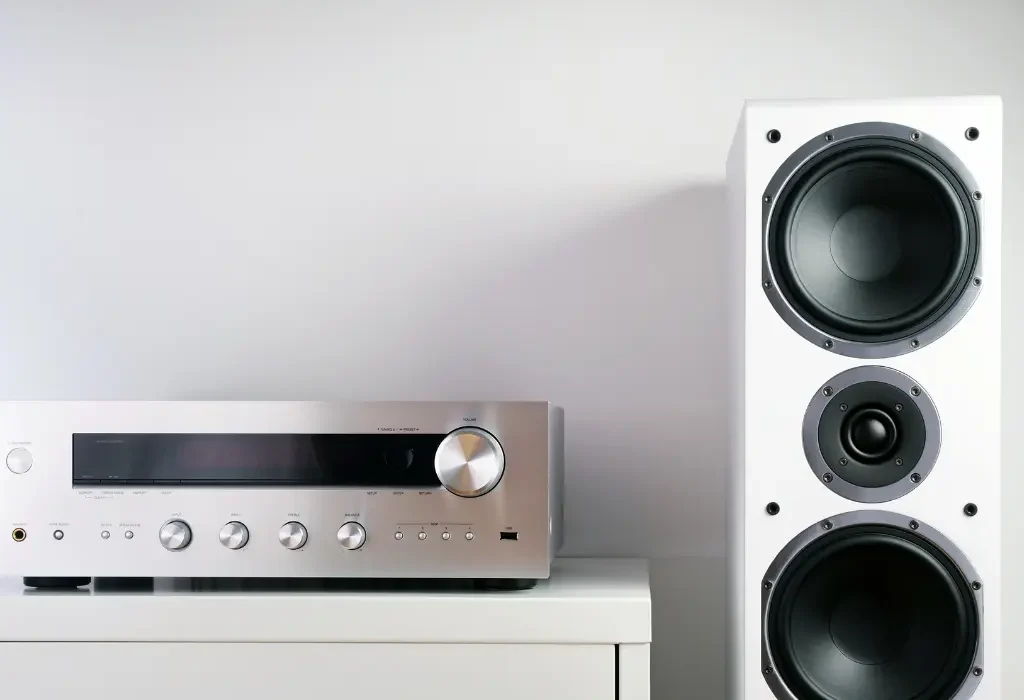Transforming your living room into a home theater can dramatically enhance your entertainment experience, offering the immersive feel of a movie theater right at home. From choosing the right equipment to optimizing your room’s acoustics, this comprehensive guide will help you set up a home theater that delivers stunning visuals and superb sound.
1. Planning Your Home Theater
Room Selection: Choose a room that can be dedicated to your home theater setup. Ideally, this room should be away from high-traffic areas to minimize noise and interruptions. Consider the room’s size, shape, and potential for light control.
Layout and Seating: Plan the layout with a focus on seating arrangements that provide an unobstructed view of the screen. Comfortable seating, such as recliners or a sectional sofa, enhances the viewing experience. Arrange the seats so everyone has a direct line of sight to the screen.
Acoustic Considerations: Good acoustics are crucial for a home theater. Soft furnishings, carpets, and curtains can help absorb sound, while acoustic panels or soundproofing materials can further enhance audio quality by reducing echo and outside noise.
2. Choosing the Right Equipment
Display Options:
- TV: A large, high-definition TV with 4K resolution and HDR capabilities is an excellent choice for a home theater. Ensure the TV size is appropriate for the room, providing a cinematic experience without overwhelming the space.
- Projector and Screen: For a true theater experience, consider a projector and screen setup. Projectors offer larger screen sizes and can deliver exceptional image quality. Choose a screen with the appropriate gain and material for your projector.
Sound System:
- Soundbar: A soundbar is a simple, space-saving solution that enhances audio quality compared to built-in TV speakers. Some soundbars come with subwoofers for added bass.
- Surround Sound System: For immersive audio, opt for a surround sound system. A 5.1 system includes five speakers and a subwoofer, while a 7.1 system adds two additional speakers. Position the speakers around the room to create a 3D sound environment.
Receiver: A receiver acts as the hub for your home theater system, connecting all audio and video components. Choose a receiver with enough inputs and outputs to accommodate your devices and support for the latest audio and video formats.
Media Player: Select a media player that meets your needs, such as a Blu-ray player, streaming device, or gaming console. Ensure it supports high-definition content and has the necessary connectivity options.
3. Setting Up Your Home Theater
Mounting the TV or Projector Screen:
- TV Mounting: Mount your TV at eye level when seated for optimal viewing comfort. Use a wall mount that supports the size and weight of your TV.
- Projector Screen Installation: Install the projector screen on a flat wall, ensuring it’s centered and at the right height for viewing. Use a level to confirm it’s straight.
Positioning the Projector: Place the projector on a stable surface or mount it on the ceiling. Ensure the projector is aligned with the screen and at the correct distance for optimal image size and focus. Use the projector’s keystone correction feature to adjust the image if necessary.
Speaker Placement:
- Front Speakers: Position the left, center, and right speakers at ear level, equidistant from the seating area. The center speaker should be directly above or below the screen.
- Surround Speakers: Place the surround speakers to the sides and slightly behind the seating area at ear level.
- Subwoofer: Position the subwoofer near the front of the room, but experiment with placement to find the spot that delivers the best bass response.
Connecting Components: Connect your TV or projector, receiver, speakers, and media player using high-quality HDMI and audio cables. Label the cables for easy identification and organize them to prevent tangling.
Calibrating the System:
- Video Calibration: Adjust the display settings on your TV or projector for optimal picture quality. Use calibration tools or professional calibration services if necessary.
- Audio Calibration: Use the receiver’s auto-calibration feature or manually adjust speaker levels and distances for balanced sound. Consider using a sound meter to fine-tune audio levels.
4. Enhancing Your Home Theater Experience
Lighting Control: Install dimmable lights or smart lighting systems to create the perfect ambiance for movie watching. Blackout curtains or blinds can block external light, enhancing the viewing experience.
Comfort and Convenience: Add extra touches like plush blankets, pillows, and a mini-fridge for snacks and drinks. Install a universal remote or home automation system to control all your devices effortlessly.
Acoustic Treatment: Enhance sound quality by adding acoustic panels, bass traps, or diffusers to the walls and ceiling. These treatments can reduce echoes and improve overall sound clarity.
5. Maintaining Your Home Theater
Regular maintenance ensures your home theater system continues to perform at its best. Clean your equipment, check cable connections, and update firmware on your devices. Periodically recalibrate your audio and video settings to maintain optimal performance.
Conclusion
Creating a home theater involves thoughtful planning, selecting the right equipment, and meticulous setup. Whether you’re watching movies, streaming shows, or gaming, a well-designed home theater transforms your living space into an entertainment haven. Follow this guide to set up a home theater that delivers an unparalleled viewing and listening experience.
